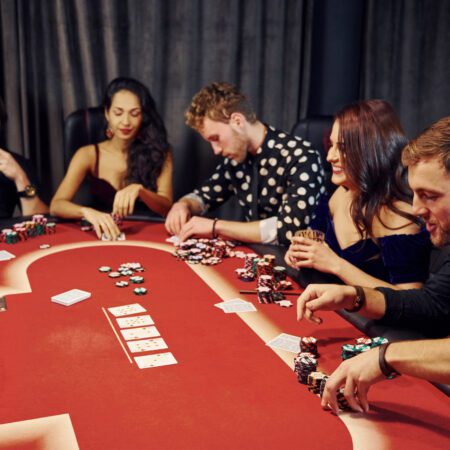Master the art of bluffing in poker with these tips and strategies. Improve your poker game and increase your chances of winning with effective bluffing techniques.
The Art of Bluffing: Tips for Successful Poker Playing
Whether you’re a seasoned poker player or just starting out, mastering the art of bluffing is essential for success at the table. Bluffing is a strategic skill that can help you win pots even when your hand is not the best. It involves making your opponents believe that you have a strong hand, causing them to fold and giving you the advantage.
In this article, we will explore the art of bluffing in poker and provide you with some tips to improve your bluffing game. Let’s jump right in!
The Psychology of Bluffing
Bluffing is all about psychology. It’s about manipulating your opponents’ perception of your hand. The key is to make them believe that you have a better hand than they do, causing them to fold.
One common mistake beginners make is bluffing too often. Bluffing can be a powerful tool, but it’s important to use it sparingly and at the right moments. Bluffing too frequently will make your opponents catch on and call your bluffs, which can be detrimental to your stack.
Timing is crucial when it comes to bluffing. Look for opportunities when the board cards don’t favor your opponents’ hands or when they show signs of weakness.
Reading Your Opponents
Being able to read your opponents is a valuable skill in poker. Pay attention to their betting patterns, body language, and reactions. These cues can give you hints about the strength of their hands and whether they are bluffing or not.
Players who bet quickly and confidently often have strong hands, while hesitant or nervous betting can indicate a weak hand or a bluff attempt. However, it’s essential to note that these indicators are not foolproof and can vary from player to player.
Building a Bluffing Image
Building an image at the table is vital in successful bluffing. If you’ve been playing a tight and conservative game, your opponents are more likely to believe you when you make a bluff. On the other hand, if you’ve been playing loose and aggressive, your bluffs might not be as effective.
Remember that your image can change during the course of a game, so be mindful of adjusting your bluffing strategy accordingly.
Consider Your Table Position
Your position at the table is crucial in determining the success of your bluffs. Late position is advantageous for bluffing since you have more information about your opponents’ actions. It’s easier to bluff when you’re the last to act because you have a better idea of how strong their hands are.
Conversely, bluffing from an early position is riskier because you have little information about your opponents’ hands. Bluffing from early positions should be done with caution and backed by solid reads on your opponents.
Size Your Bluffs Appropriately
The size of your bluff should be carefully considered. If you bet too small, your opponents might see it as a value bet and call you with weaker hands. However, if you bet too large, it can be a red flag, and your opponents might suspect a bluff and fold.
As a general rule, your bluff should represent a believable hand. It should be a bet that your opponents can realistically call with weaker hands if they choose to.
Practice Makes Perfect
Bluffing is a skill that requires practice. The more you play and practice your bluffing strategies, the better you will become. Analyze your hands after each session and identify opportunities where bluffing could have been effective or where you might have been caught bluffing.
By reviewing your play and learning from your mistakes, you can refine your bluffing skills and become a more successful poker player.
Conclusion
Bluffing is an art that can take your poker game to the next level. It requires a combination of psychology, observation, and careful execution. By mastering the art of bluffing, you can gain an edge over your opponents and increase your chances of winning.
Remember to bluff selectively, read your opponents, build a bluffing image, consider your table position, and size your bluffs appropriately. With practice and experience, you can become a formidable bluffer at the poker table.
So, what are you waiting for? Put these tips into practice and take your poker game to new heights!










